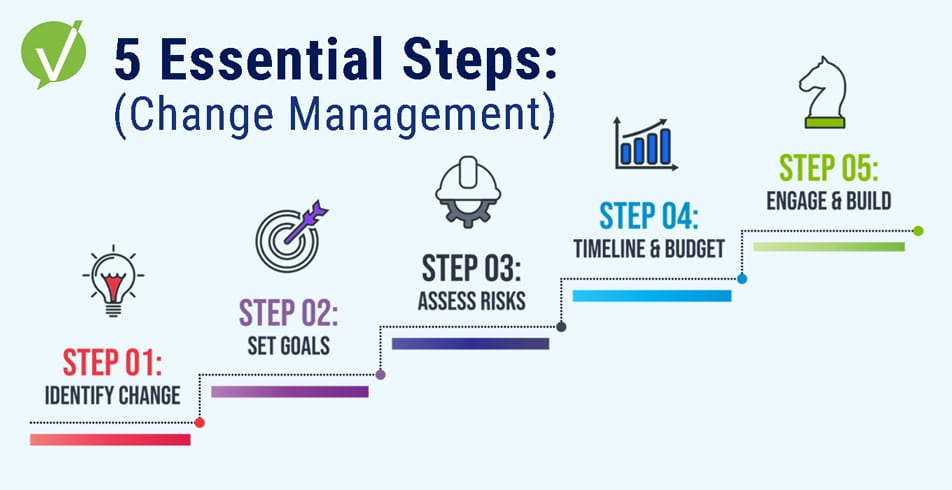ITSM Introduction: An End-to-End Service Delivery Model
“IT service management (ITSM) is a concept that enables an organization to maximize business value from the use of information technology.” – @Axelos
The above definition of ITSM is an excellent basis for introducing what ITSM is all about. How do end users, be they external customers in a B2B or B2C environment, internal employees using IT systems, or even wider through the organization employees interacting with HR, Finance, and Facilities, gain value from the products and services offered?
How can a business elevate service to end users, enable increased productivity and empower their teams to focus on what is essential – delivering value? Looking at the practices and components of ITSM can support this, especially when combined with industry best practices such as ITIL. And despite “IT” in the ITIL acronym… ITIL4 no longer belongs solely to IT but all service teams.
Core Basic Processes of ITSM
Incident Management
Incidents are when an issue arises for a user that needs to be dealt with. This can be a lost password, an email system issue, a computer malfunction, a line of business system error, or a how-to question around any product or service.
Problem Management
Suppose a group of incidents come in that all end up being a symptom of the same root cause (for example, multiple tickets logged as staff cannot access email is actually the email server down.) In that case, that cause is considered a problem. Problem management deals with identifying problems, categorizing them, resolving them, and storing data to make them easier to prevent in the future.
Service Request
Service requests are not incidents or problems. Instead, they are requests from users who need something. This could be a permission change on a file system, a new piece of equipment, or a request to kick off a new starter workflow.
Change Management
Change management is about handling any changes made to services or products offered to end users.
Configuration/Asset Management
There are many physical IT assets that make up the structure of a network. Configuration management deals with the configurations of these physical IT assets.
There are broader processes, such as; Release Management, Availability Management, Capacity Management, CMDB, and Service Level Management, but you could write a whole blog post on each process in detail.
How Introducing ITSM Can Software Help
ITSM Software is a platform to manage a company’s products and services to its end users, be that internal organization users or external B2B/B2C customers.
These platforms allow businesses to automate repeatable processes, develop workflows, and organize information to ensure that the service team has all the information they need whenever they receive an incident or service request. They also offer user/client-facing tools like self-service portals that help personalize experiences and efficiently provide self-help and route tickets.
The range of existing Service Management platforms supports the different maturity of customer requirements, from basic case/ticket management to complex workflows and supporting teams across the whole organization. When evaluating ITSM platforms, consider a platform that can quickly scale in process maturity and longitudinally across the business.
A whole company unified platform can help drive efficiencies, improve service levels, increase value and provide continual improvement across the entire enterprise. And as you scale, how much effort is involved in configuring the platform to meet the business requirements?
For growth-minded businesses that are recognizing a need for a premium service experience at a larger scale, some high-level features signify a cutting-edge software management platform:
- Fully customizable workflows to tailor the ITSM processes to their business – allowing requests to be routed automatically to the right team; to kick off change workflows so that approvals can take place
- Business Rules Engine – used to automate flows such as round-robin assignments, alerts for breaching service levels; sending out surveys when requests are marked as closed
- Versatile integrations to ensure other critical systems, such as asset discovery and event monitoring, populate the ITSM system with pertinent information
- Comprehensive client/users profiles that give a complete view of each and every end user
- The ability to manage and track different types of tickets. This is important so that other teams can focus on different types of requests that all have different service levels and impact on the business:
- Incidents – something went wrong
- Problems – something affecting multiple people
- Changes – the process designed to make changes to fix known problems
- Service Requests – asking for help, advice, or an asset (i.e., a request for a new desk phone)
- Service Level Management – the ability to prioritize, track progress and ensure all requests are dealt with within the appropriate time
- Asset Management/CMDB – the ability to track all the assets in a business and understand the relationship between assets and the impact if an asset is unavailable.
- Knowledge Management – store all business help, training and information in a single place that can be accessed by all staff
- Comprehensive reporting – the most critical of all features, the ability to have clear insight into performance through dashboards, KPIs and reports.
Each of these is vital for a business attempting to improve efficiency at a larger scale without sacrificing quality. Efficiency is not everything. ITSM software should elevate, empower, and enable your operations and teams to provide stellar customer service that continually improves.













